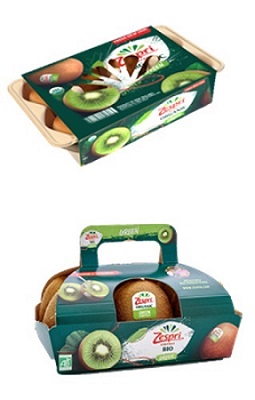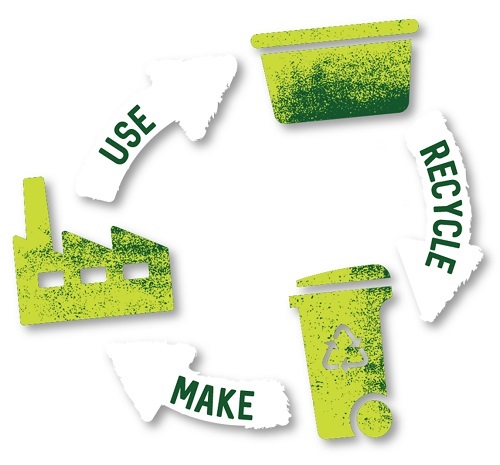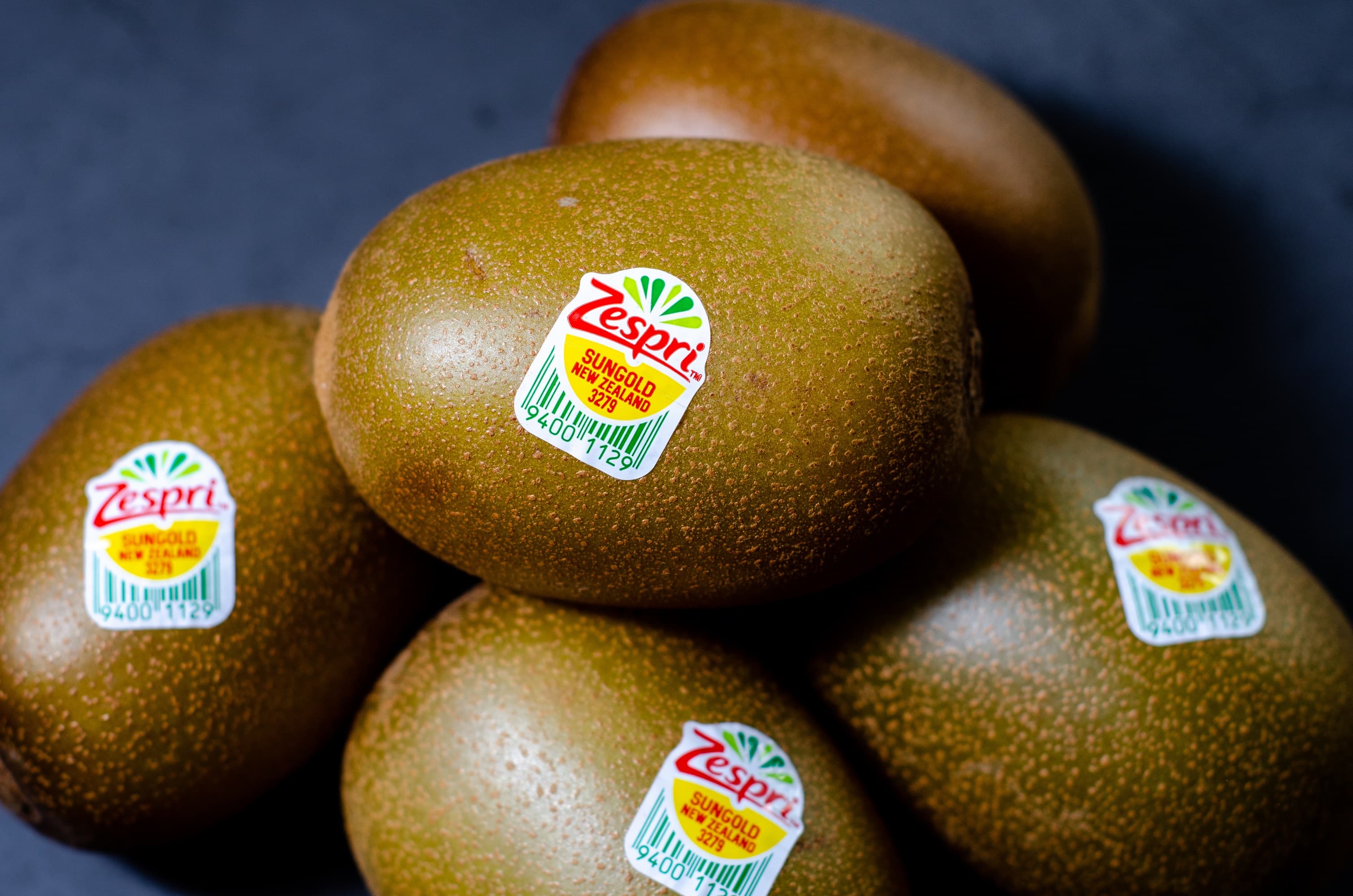Packaging reform is a long road with many moving parts and impacts to weigh up. Global kiwifruit marketer, Zespri, has invested in solutions involving more than just switching out plastic for more sustainable packaging materials. Their comprehensive market and product analysis provides a deep perspective on the packaging supply chain and informs their efforts toward a more sustainable delivery system.
Founded in 1997 by New Zealand kiwifruit growers, Zespri is the world’s largest marketer of kiwifruit. They work with approximately 2,800 New Zealand and 1,500 international growers and post-harvest companies to source the best quality Zespri Kiwifruit, which they supply through their distribution partners to wholesale and retail customers. Their kiwifruit are sold in more than 50 countries with North America, Europe, Japan, southeast Asia, and China comprising a large portion of the market.
Sustainability is what Zespri calls one of their "must-wins." They are implementing a plan underpinned by the principle of meeting the needs of the present without compromising the future of the planet. Rachel Depree, Executive Officer for Sustainability at Zespri describes sustainability as a major focus and underscores their purpose-driven mission to help people, communities, and the environment around the world thrive through the goodness of kiwifruit. For each sustainability priority, Zespri is setting up programs to focus on achieving ambitious targets that place them as innovative leaders of sustainability in the kiwifruit market.
As well as focusing on communities and health and wellbeing, their environment priorities include packaging, water and climate change. This case study profiles Zespri’s packaging initiative, one of their top sustainability priorities.
UN Goals
3 - Good Health and Wellbeing
12 - Responsible Consumption and Production
13 - Protect the Planet
The opportunity: Sustainably supplying the world
The challenge facing all supply chains is finding ways to move away from the “take, make and dispose” packaging model toward an environmentally sustainable one. This may seem straightforward, but peeling away the layers reveals a complex initiative that requires thoughtful navigation through many impacts such as food safety and quality, recyclability and infrastructure, carbon footprint, country regulations, and retailer preferences.
While it may seem reasonable to solve the packaging conundrum by omitting packaging altogether, the solution is not that simple. Zespri’s growers are committed to growing high quality kiwifruit from their vines, and these growers entrust Zespri to supply and present their kiwifruit to consumers all around the world in premium condition. By controlling the exchange of gas and vapors, packaging helps prevent food-borne diseases during storage and preserves food quality, extending shelf-life and mitigating food loss. Eliminating packaging can solve one sustainability problem only to create another.
Creating a successful sustainable packaging model is much like putting together a jigsaw puzzle. It requires careful analysis and understanding of the market and the varied recycling infrastructures and differing country regulations that guide those infrastructures. For example, the European market is driving packing regulation, so it is a "must-do," whereas the Asian market is still based on speed to market and cost, which are both significant drivers—though Zespri is seeing concerns around food safety and environmental aspects emerge in this market, too.
“We recognized there was an opportunity to drive efficiency and reduce cost in terms of the scale and scope of the pack types we are using across all our markets and better understand and know we're meeting food safety requirements as well as get a handle on what our packaging materials are and where we are using them,” says Depree.
Consumers are also becoming more aware of the impact their purchases have on the planet, and demand for alternative packaging options is on the rise. As well, some retailers are requesting “environmental credentials” of the packaging that is delivered to their stores. In addition, government regulating bodies around the world are following suit, banning single-use plastics and non-compostable and nonrecyclable packaging.
With all these competing factors, how does a company begin to navigate through the maze to meet the needs of their stakeholders while remaining sustainable?
The solution: Multi-faceted packaging overhaul
Before figuring out how to change, companies need to determine what needs to change. To better understand what sustainability efforts were most needed, Zespri conducted a “materiality assessment” that included a series of staff workshops with growers, discussions with supply entities, and engagements with stakeholders. Through these conversations, they gleaned insider perspective on the issues that mattered most to their business and to the industry overall. This multi-stakeholder input was invaluable in helping Zespri determine their focus on packaging—a strong drive for consumers.

Solving the packaging problem is a systems challenge. Depree says: “Once you've decided your priorities, you have to get good data, understand your pack types, know the recycling infrastructure and understand the markets you’re working in. Operationally, you need to be able to work with your current customers, distributors, retailers and solve those packaging problems. Unfortunately, there’s no one size fits all.”
One of the first areas to focus on was gaining full visibility of their consumer pack types. Zespri has developed a Global Consumer Packaging Management System. This provides insight into every packaging type they use in their global markets and provides an improved understanding of the materials used in each packaging type and its carbon footprint, using lifecycle assessment methodology.
The granular visibility provided by this system enables Zespri to show the environmental impacts of different pack types, identifying the priority pack types to change. Making the impacts visible has helped Zespri to work with customers and distributors to set up trials for new pack types.
Another important aspect in driving change on packaging has been determining who is best to own the key initiatives within the business and how to get them as close as possible to the point of decision making. Within Zespri, their Product Innovation Team manages the packaging system. They already work closely with the in-market teams and this new data provides the full understanding on which packaging types are problematic and strategically determine which customers and retailers they need to work with to make that switch.
Knowing the market and its consumers is also key. This not only starts at the material choice but also enables consumers to take the right action to ensure the packaging is truly recycled at the end of its life. This means the right messaging of “call to action” needs to be delivered on the packaging to guide consumers. Zespri conducted multi-market research to understand the triggers and barriers of sustainable messaging on pack. In line with the “no one size fits all approach,” it was important to understand cultural nuances and behaviors that would influence change. Second, Zespri needed to consider the infrastructure in each market as every material has a different end of life (e.g., where PET can be recycled in Taiwan, but can only be recycled at low levels in other Asian markets).
Through their insights, Zespri has been able to set up their trials with these regional requirements in mind. In their Japanese market, Zespri trialed a paper-based pouch with a poly-acidic acid plastic (PLA) window. In the United States market, they initiated a fully compostable sample packaging trial that sits alongside their 100% recyclable and reusable polyethylene terephthalate (PET) pack, accommodating the plastics recycling infrastructure. In the European market, cardboard packaging is seen as favorable to consumers and regulating bodies. There, Zespri focused their trials on cardboard packaging. This approach caters not only to regional demands but delivers the highest chance of preventing leakage into a landfill or the environment.
Zespri is now turning their attention to how to encourage reusable packaging—truly closing the loop on packaging so that it doesn’t become waste. They are very early in this journey but, through their ‘Eco-labs’ initiative, they are now looking to work with start-ups to help identify solutions for trial and scaling. This includes not just thinking about reusable containers or reverse vending, but also how to encourage consumers to be rewarded through mobile apps that gamify and incentivize the right actions.
Says Depree, “One of our next challenges is getting the procurement model right.” This means understanding how to move from least-cost packaging to a model where they can work collaboratively with their large distributors to create value—given that many environmentally friendly options cost more. “This requires a different approach, one which will see us build different kinds of relationships with them.”
The takeaway: Region-specific produce packaging
As with all supply chains, when kiwifruit are moved from one place to another, they gather a carbon footprint. Understanding this footprint, then working to identify where it can be reduced is critical to making progress.
By 2025, all of Zespri’s packaging will be 100% recyclable, reusable or compostable. Also, any plastic packaging that is necessary will be made from at least 30% recycled/recyclable plastic. With the breadth and scope of their packaging program, Zespri is working to reduce their packaging footprint per kilogram of kiwifruit by 25% by 2030. With packaging being a key component in the shipping of kiwifruits across the world, a 25% footprint reduction is a major undertaking.
While changing packaging material can make a big difference, it is sometimes a question of what, if any, type of packaging is needed. Much of the kiwifruit Zespri delivers to Europe is bulk. This is beneficial for two reasons: first, the kiwifruit is not being repacked into consumer pack, so its carbon impact is less and, second, it eliminates the introduction of the plastics used for flow wrap. Where packaging is necessary, Zespri has shifted to an all-cardboard pack and smaller pack sizes to help minimize their carbon footprint.

The conversations with stakeholders can be difficult—especially where they are resistant to change. Zespri has created a packaging toolkit to help their teams guide those conversations and educate their stakeholders. The toolkit acts as a playbook and addresses various focuses such as messaging, application of logo, developing a digital ad campaign, etc. For Zespri, it is important that they enable improved environmental performance through the same systems that are used for all their focus areas.
“We try not to make sustainability special, or different and difficult, it's just part of what we do as a business,” says Depree.
Zespri’s Product Innovation team offers support through market-to-market virtual and in-person workshops to help their teams understand the toolkit and build their learning and capability. This gives them the confidence to work with distributors and customers, challenging them to try different materials and pack types. Their insight and learning provides value to customers because they are able to say, “We understand it is this much material and this much pack type with this much carbon and, if we reduce that by this much, it will help with your overall footprint.”
The benefits
While packaging reform requires an initial investment as the packaging types cost more, it is an investment that pays off. Through their market research, Zespri determined that there is a willingness to purchase more sustainable pack types, and in the trials to date, Zespri has also seen retailers agree to expand the Zespri products they have on their shelves.
These successes highlight the power that market analysis, supply chain reform, and material modification can have on the quest toward sustainability. By simply understanding what the consumers want in terms of sustainability and facilitating and supporting the supply chain to update and upgrade, packaging can work with the environment rather than against it.
As Depree explains, “We want to be part of the solution and the prevention of the plastic pollution problem around the world. And so, for us, health and well-being is also about health and well-being of environments, about making sure that the packaging products that we use are not ending up in waste streams, waterways and on beaches that prevents people from enjoying those environments.”
